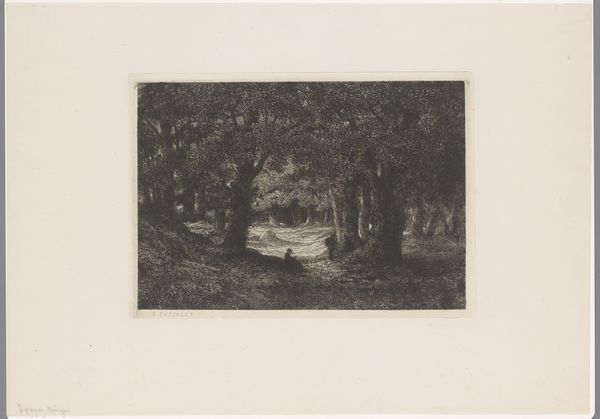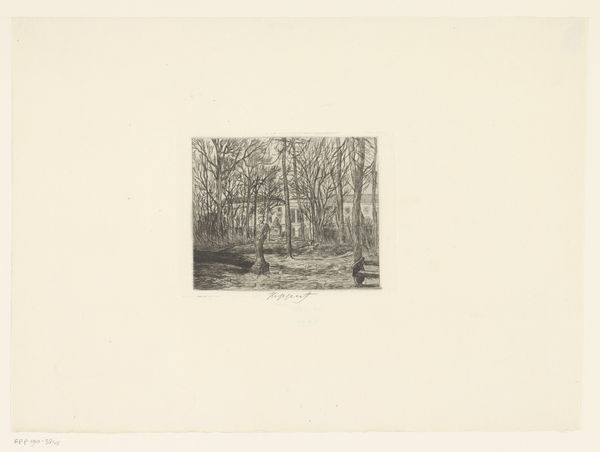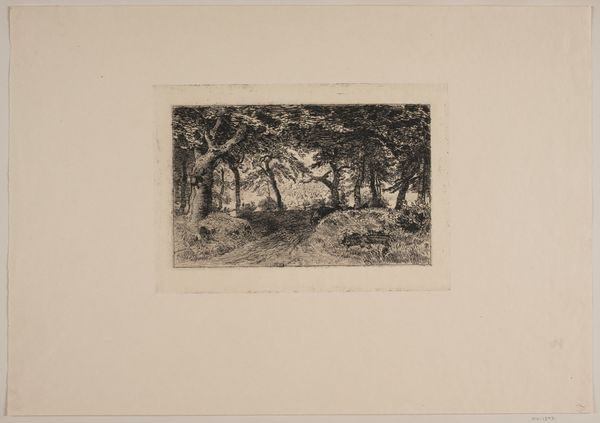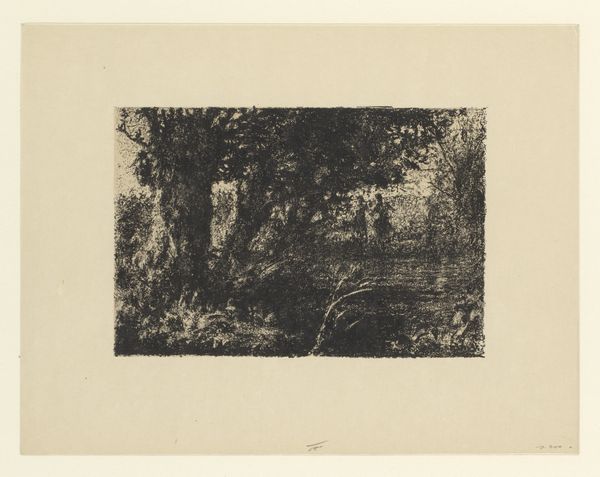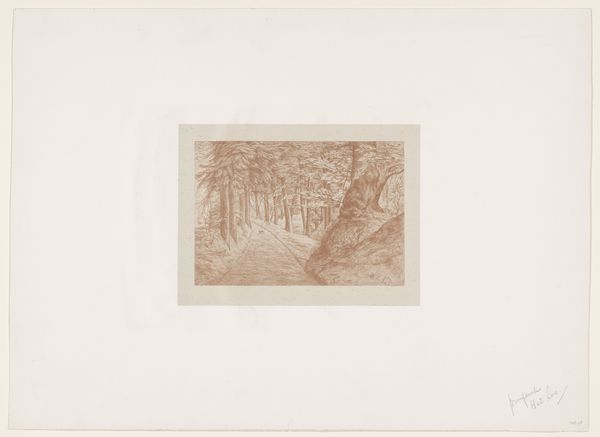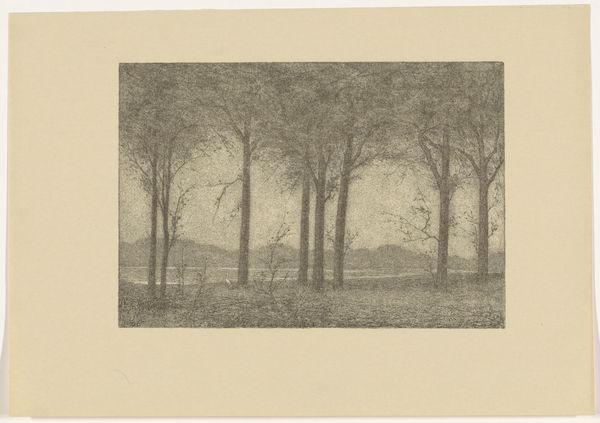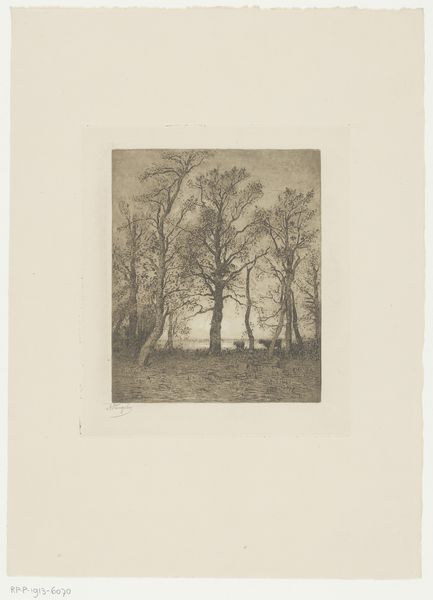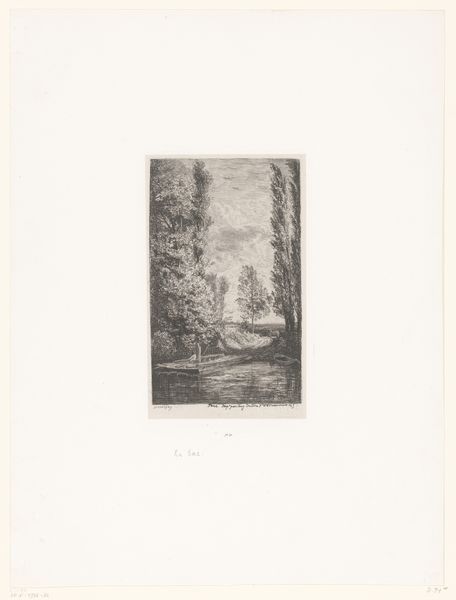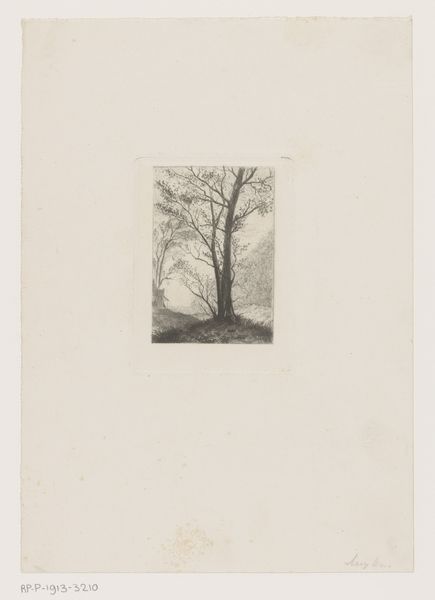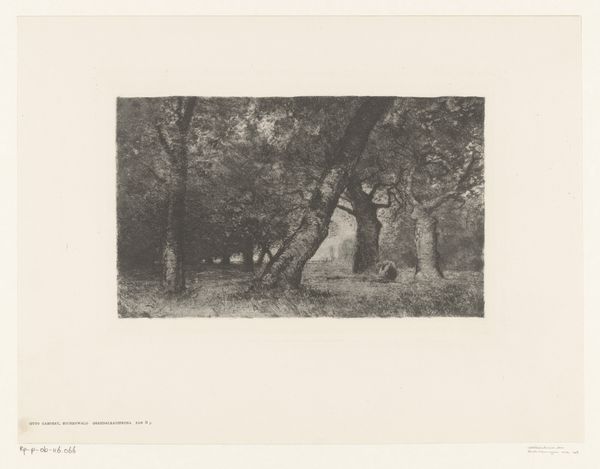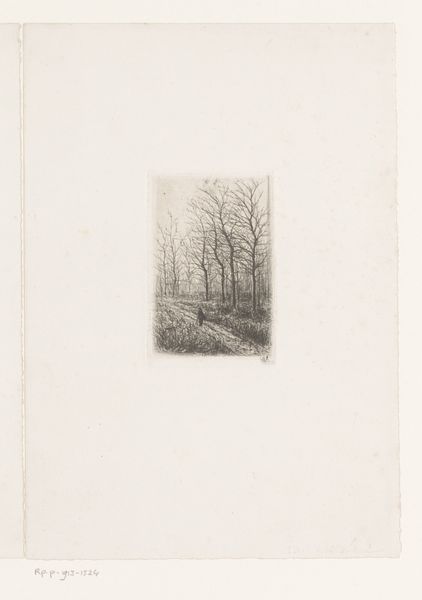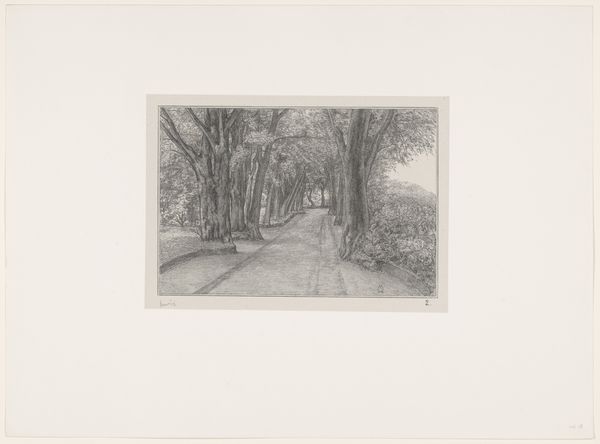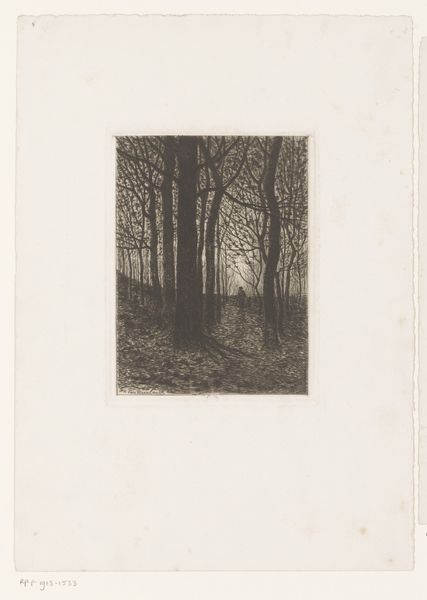
Dimensions: height 457 mm, width 618 mm
Copyright: Rijks Museum: Open Domain
Curator: Up next we have "Three Trees Before a Vista," a drawing made around 1904 or 1905 by Simon Moulijn, currently residing here at the Rijksmuseum. Editor: Oh, it’s a lovely, hushed kind of scene. I immediately think of the way pencil softens the landscape, rendering it somehow more intimate than, say, a painting of the same vista might. It is almost like the trees are sheltering the horizon. Curator: He chose graphite and pencil for this, giving it that silvery quality. Note how Moulijn balances the solid forms of the trees against the hazy, almost dissolving background. It’s line work, yes, but not sharp. Editor: You're right, and you can see where the artist's hand was at work, the repetitive marks and smudges; it emphasizes labor as fundamental to art-making. Look closely, it’s essentially layers upon layers of pencil, carefully built up. Curator: Precisely! This was impressionism, though the lines here are incredibly gentle. One has the sense he’s not trying to replicate nature exactly but more trying to evoke a mood or memory of nature. Perhaps a dream. Editor: Interesting thought about a dreamscape—the restricted material palette is something worth noting in connection to production costs during that period; his choice emphasizes access and utility as defining elements rather than extravagance. A statement, in a way. Curator: A statement rendered subtly in gentle graphite! Well, I suppose if those trees could speak, they would also have something quiet and profound to say, no need to shout. The landscape itself already does all of our loud talking for us. Editor: Indeed, and thank goodness for that quiet talking back then! The legacy here rests not only on its beauty but as an example that resonates, revealing our potential to shape and transform not only raw materials but society.
Comments
No comments
Be the first to comment and join the conversation on the ultimate creative platform.
